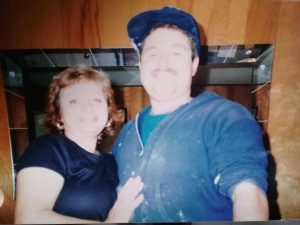Starting My Own Business.

With my new sanding machine and spinner loaded in the Chevy Malibu, I was eager to embark on my journey as an independent business owner. The excitement was palpable, but reality quickly set in. The first few months were tough. I navigated the steep learning curve that came with running a business from scratch, grappling with logistics, scheduling, and the inevitable hiccups that come with any new venture.
There were days when self-doubt crept in, and I questioned whether I had made the right decision. But just like in pool, where every shot counts, I reminded myself that success in the wood flooring business demanded persistence, patience, and precision. I had learned to hustle in the past, and I was determined to apply that same tenacity to my new endeavor.
I established relationships with suppliers, starting with Long Island Maintenance, where I bought everything from polyurethane finishes to wood floor sealers to sandpaper. Jerry, who ran the store, quickly became a valuable resource. I visited him regularly, tapping into his extensive knowledge about flooring materials. He was always willing to offer advice, whether it was about the best finishes for high-traffic areas or tips on selecting the right grit of sandpaper for specific jobs. Building that rapport with Jerry over the years proved essential to my business’s growth.
Despite the support, the early days were challenging. One of the major hurdles I faced was the power of my equipment. The sanding machine I had initially purchased ran on 110 volts, which worked for smaller jobs but lacked the muscle needed for larger, more demanding projects. I quickly realized I needed an upgrade if I wanted to take on the types of jobs that could really propel my business forward.
That’s when I decided to invest in what we called the Big Machine—a powerful sanding machine that ran on 220 volts. It was a significant investment, but I understood that to grow my business, I needed to provide the best quality possible. After discussing my needs with Jerry, I found the perfect machine at Long Island Maintenance. It became the cornerstone of my operations, allowing me to tackle jobs that had previously felt out of reach.
Alongside the Big Machine, I also purchased a new spinner, which was essential for sanding the borders of floors, especially up close to the floor molding. Learning to use hand scrapers for tight corners became part of my routine, and I took pride in ensuring that every job was not just good, but perfect. In my mind, perfection wasn’t just a goal—it was a necessity. If I didn’t do a flawless job, complaints would trickle up to Irving, and then, inevitably, to my mother. That was a fate I wasn’t willing to face.
As my business began to stabilize, I found myself thinking about how to differentiate my services. I realized that to truly stand out, I needed specialized equipment that would allow me to tackle every nook and cranny of a space. That’s when I invested in an under-the-radiator machine, a handy tool that enabled me to sand flooring beneath radiators and other hard-to-reach places. This little investment made a huge difference; I was now able to ensure that every floor I sanded was flawless, regardless of the obstacles in the way.
I remember one job in a charming old house in Baldwin. The homeowners had painstakingly renovated every room, but the floors were a patchwork of unfinished sections due to the presence of radiators. When they saw the transformation, I achieved with the under-the-radiator machine, their eyes lit up with disbelief. It was moments like these that reinforced my belief in the importance of attention to detail and the pursuit of excellence.
Word began to spread about my work. Clients were thrilled with the results, and referrals started to pour in. The combination of my persistence and the quality of my equipment had begun to pay off. I also learned the importance of marketing. I created a simple portfolio of pictures in 1987, way before the internet was invented, showing the before and after photos of my projects, highlighting the transformation that my work could achieve.
As my clientele expanded, I started thinking about the future. I envisioned a company that not only focused on wood flooring but also embraced the idea of creating beautiful spaces. I wanted to partner with designers to offer complete renovation packages, turning my business into a one stop shop for clients looking to enhance their homes.
The vision was ambitious, but I felt ready to take it on. I had learned so much in a short time, and I was excited to see how far I could push my business. With each project, I felt more confident in my abilities, more connected to my community, and more determined to make a name for myself in the industry.
As I stood back to admire each finished floor, I realized that I wasn’t just building a business; I was crafting a legacy. A legacy that celebrated quality, creativity, and the relationships I had formed along the way. Each grain of wood beneath my fingertips represented not just a job completed, but a step further in my journey. The challenges I faced only fueled my determination, and I was ready to embrace whatever came next, knowing that with each challenge, I was shaping my future.
